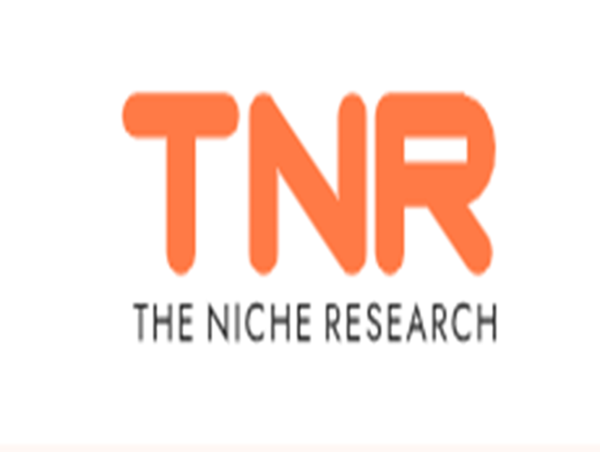Global In-building Wireless Market Anticipated to Reach US$ 39.2 Bn by 2034; at a CAGR of 12.5% During 2024 – 2034
WILMINGTON, DELAWARE, UNITED STATES, May 17, 2024 /EINPresswire.com/ -- In-building wireless solutions typically involve the deployment of infrastructure components such as antennas, distributed antenna systems (DAS), small cells, repeaters, and access points strategically placed throughout the building to enhance signal strength and coverage. These components are interconnected to create a robust wireless network that can support voice, data, and multimedia services. The primary objective of in-building wireless systems is to address challenges related to poor cellular coverage, dropped calls, slow data speeds, and network congestion experienced within indoor environments. By improving indoor connectivity, these systems enable users to stay connected, access online resources, make voice calls, and utilize data-intensive applications without interruption. In addition to enhancing user experience, in-building wireless solutions also play a crucial role in supporting critical communication needs such as public safety and emergency response. Regulatory requirements may mandate the deployment of in-building wireless systems to ensure reliable communication for first responders and emergency personnel during emergencies.
Get Sample Copy of the Report
Global In-building Wireless Market: Key Driving Factors
Public Safety Requirements: Regulatory mandates and building codes require adequate wireless coverage and communication capabilities for public safety agencies within commercial buildings, healthcare facilities, and other high-occupancy spaces. In-building wireless solutions, such as distributed antenna systems (DAS) and emergency responder radio coverage systems (ERRCS), ensure reliable communication for first responders and emergency personnel during critical situations.
Enhanced User Experience: In-building wireless networks contribute to a positive user experience by providing seamless connectivity for voice, data, and multimedia services. Whether it's making voice calls, accessing streaming video content, or using location-based applications, users expect reliable connectivity indoors, driving the demand for in-building wireless solutions that deliver consistent performance and coverage.
Remote Work and Telecommuting: The shift towards remote work and telecommuting arrangements has accelerated the demand for in-building wireless solutions that can support remote collaboration, video conferencing, and cloud-based applications. As more employees work from home or alternate locations, there is a growing need for reliable connectivity in residential buildings, co-working spaces, and satellite offices.
Speak to our analyst in case of queries before buying this report
Based on the Building Size, which is the Fastest Growing Segment in the In-building Wireless Market During the Forecast Period?
Large Building Size segment is projected as the fastest growing segment in the In-building Wireless Market. Large buildings often incorporate various IoT devices and sensors for building automation, environmental monitoring, security, and other applications. These devices require robust wireless connectivity to communicate with each other and centralized management systems. In-building wireless infrastructure supports the deployment and operation of IoT devices, enabling smart building initiatives and enhancing operational efficiency. In emergencies, such as fires, natural disasters, or security incidents, large buildings must facilitate reliable communication for emergency responders and building occupants. In-building wireless systems, including public safety DAS (Distributed Antenna Systems), ensure that first responders have access to critical communication channels and that occupants can receive emergency alerts and instructions. Large buildings often face challenges related to poor cellular coverage and dead zones, particularly in areas distant from external cell towers. In-building wireless solutions are essential to extend coverage throughout the entire building, ensuring that occupants have access to reliable cellular and wireless connectivity regardless of their location.
Based on the End-User, which is the Fastest Growing Segment in the In-building Wireless Market During the Forecast Period?
Education industry is anticipated to be the fastest growing segment in the In-building Wireless market during the forecast period. Many educational institutions have implemented Bring Your Own Device (BYOD) policies, allowing students and faculty to use their smartphones, tablets, and laptops for learning and teaching activities. In-building wireless infrastructure ensures that these devices can connect to the school's network seamlessly, enabling access to educational apps, online libraries, and cloud-based resources. With the increasing integration of technology in education, schools and universities are adopting digital learning tools, online resources, and interactive platforms. In-building wireless networks support these initiatives by providing reliable connectivity for students and educators to access educational content, participate in virtual classrooms, and collaborate on projects from anywhere within the campus.
Based on Region Segment, which is the Fastest Growing Region in the In-building Wireless Market in 2023?
Asia-Pacific region is projected as the fastest growing region in the In-building Wireless market during the forecast period. Many countries in the Asia-Pacific region are experiencing rapid urbanization, leading to the construction of large commercial complexes, office buildings, shopping malls, and residential towers. In-building wireless solutions are essential for providing seamless connectivity within these densely populated urban environments, where traditional cellular networks may face challenges in coverage and capacity. The Asia-Pacific region has one of the highest rates of smartphone adoption and mobile internet usage globally. As more people rely on their mobile devices for communication, entertainment, and productivity, there is a growing demand for ubiquitous wireless connectivity, including within indoor environments such as offices, malls, and transportation hubs. Many cities in the Asia-Pacific region are investing in smart city initiatives to improve urban living, sustainability, and economic growth. In-building wireless solutions play a crucial role in supporting smart city infrastructure by providing connectivity for smart buildings, IoT sensors, surveillance cameras, and public Wi-Fi networks, contributing to a more connected and efficient urban environment.
Request for customization to meet your precise research requirements
A few of the key companies operating in the In-building wireless market are listed below:
o Airspan Networks
o Cobham
o CommScope
o Corning Incorporated
o Ericsson
o Huawei
o JMA Wireless
o Nokia
o Samsung Electronics
o TE Connectivity
o Other Market Participants
Global In-building Wireless Market
By Offering
o Infrastructure
o Distributed Antenna System
Head End Units
Remote Units
Repeaters
Antennas
o Small Cells
Femtocells
Picocells
Microcells
o Services
o Network Design
o Integration & Deployment
o Training, Support & Maintenance
By Business Model
o Service Providers
o Enterprises
o Neutral Host Operators
By Building Size
o Large Buildings
o Medium-sized Buildings
o Small Buildings
By End Users
o Commercial Campuses
o Government
o Transportation & Logistics
o Hospitality
o Industrial & Manufacturing
o Education
o Healthcare
o Entertainment & Sports Venues
o Others
By Region
o North America (U.S., Canada, Mexico, Rest of North America)
o Europe (France, The UK, Spain, Germany, Italy, Nordic Countries (Denmark, Finland, Iceland, Sweden, Norway), Benelux Union (Belgium, The Netherlands, Luxembourg), Rest of Europe
o Asia Pacific (China, Japan, India, New Zealand, Australia, South Korea, Southeast Asia (Indonesia, Thailand, Malaysia, Singapore, Rest of Southeast Asia), Rest of Asia Pacific
o Middle East & Africa (Saudi Arabia, UAE, Egypt, Kuwait, South Africa, Rest of Middle East & Africa)
o Latin America (Brazil, Argentina, Rest of Latin America)
Jay Reynolds
The Niche Research
+1 302-232-5106
email us here
![]()




